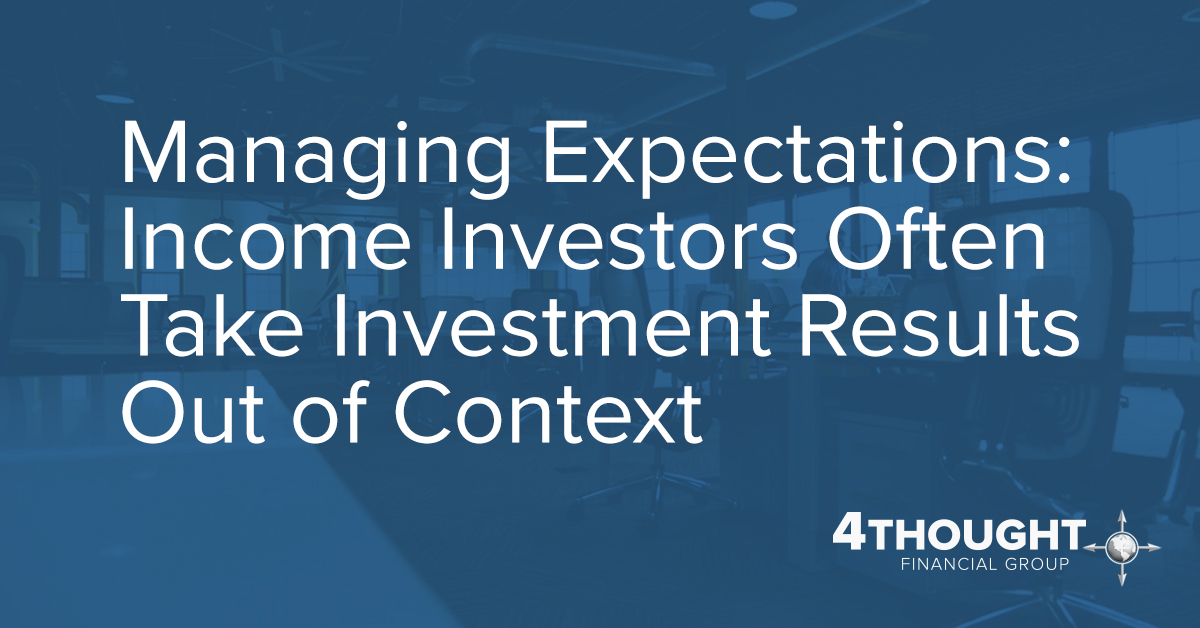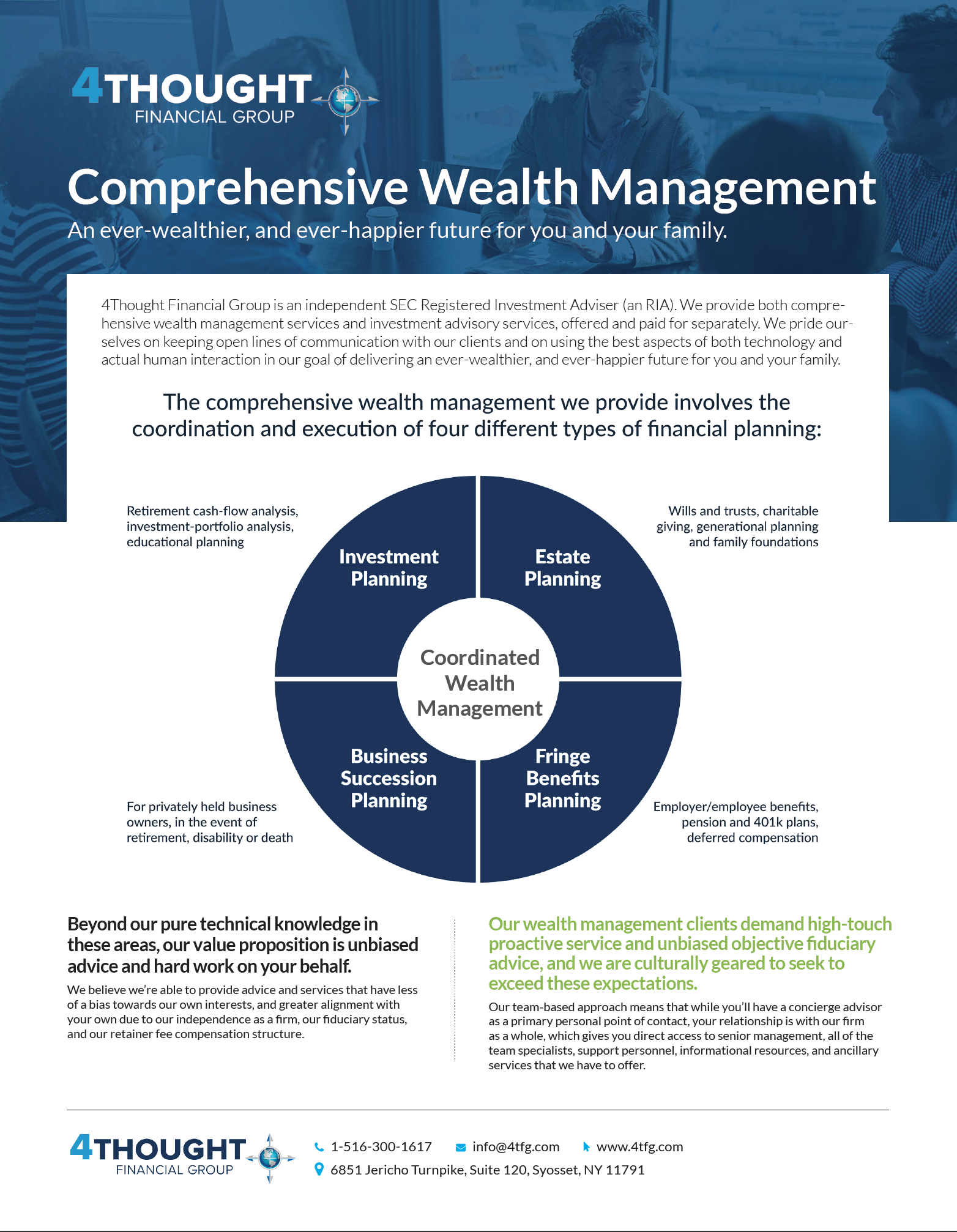

Wealth Management by 4Thought Financial Group
"The comprehensive wealth management we provide involves the coordination and execution of four different types of financial planning: Investment Planning, Estate Planning, Business Succession Planning and Fringe Benefit Planning."
When a client and I first meet, we prepare a financial plan. Within the plan, we assess cash flow needs and determine how much the portfolio must generate in order to make up any monthly income shortfall, and thereby provide for the client’s lifestyle. By figuring out what the shortfall is, we can determine how to position the investments and other income sources.
When a portfolio needs to generate steady monthly income, the traditional approach has always been to use a combination of various fixed-income vehicles, such as certificates of deposit, bonds, insurance products and dividend-paying stocks. In the low-interest rate environment of the past decade, this has been very challenging. The search for yield has led investors to take more risk in their portfolios—often leading to a higher allocation to stocks.
During the last several years, the most common approach to generating this steady monthly income has shifted to the “total return” approach. A total return approach uses portfolio growth and income (versus income alone) to generate portfolio withdrawals. When you’re talking growth, you’re typically talking about stocks. Instead of just taking the interest or dividends as withdrawals, part of the principal is also distributed (which is hopefully generated by the growth of the underlying stocks or other investments). When the withdrawal needs to be generated each month, if the stocks go down in value, or the bonds go down in value, then a loss will result, because a sale will have to be made.
So that’s where the confusion lies!
All the financial headlines talk about the S&P 500 Index and how it is doing. To compare the S&P 500 to a diversified investment portfolio that is designed to generate monthly income is an apples-to-oranges comparison.
As the baby boomers begin to retire (or position themselves to soon retire), in most cases, their portfolios should be adjusted to become more conservative. Designing a more conservative investment strategy usually entails less stock exposure, which also means less S&P 500 exposure.
Another factor that adds to the confusion is the types of stocks purchased. If someone is looking for income, a higher allocation to high-dividend-paying stocks may be used. These dividend stocks are usually not purchased for growth. Yes, it is possible that they will also grow, but that is not predominantly why they are purchased. Alternatively, stocks that are purchased for growth may or may not pay a dividend. This latter group of stocks have traditionally grown more than their brethren, the dividend-paying stocks.
So that’s part of the story that needs to be remembered when comparing investment portfolios to the S&P 500. Nomenclature associated with stocks, such as value, growth, large cap, mid cap, small cap, international developed and emerging markets, were created chiefly to differentiate between various types of stocks for the purposes of building diversified portfolios. The same holds true with fixed-income investments, such as bonds and annuities.
One of the best ways to prepare for your portfolio to generate income during retirement is to start by having a financial plan created. Make sure you speak to an experienced professional and consider getting a second opinion.
4Thought Financial Group
Questions regarding different types of financial planning services, investing for retirement, retainer fee-based wealth management, or other aspects of your financial life? Contact 4Thought Financial Group to Schedule a Second Opinion on Your Investment Portfolio, Today.
Financial Planning and Investment Advisory Services are offered through 4Thought Financial Group Inc., an SEC Registered Investment Adviser. This document is for informational purposes only and does not constitute a complete description of our services or performance. This is in no way a solicitation or offer to sell financial planning or investment advisory services except, where applicable, in states where we are registered or where an exemption or exclusion from such registration exists. This information is not to be construed as legal or tax advice. Consult with an attorney and/or an accountant before taking any action on the information provided.









Leave a Comment